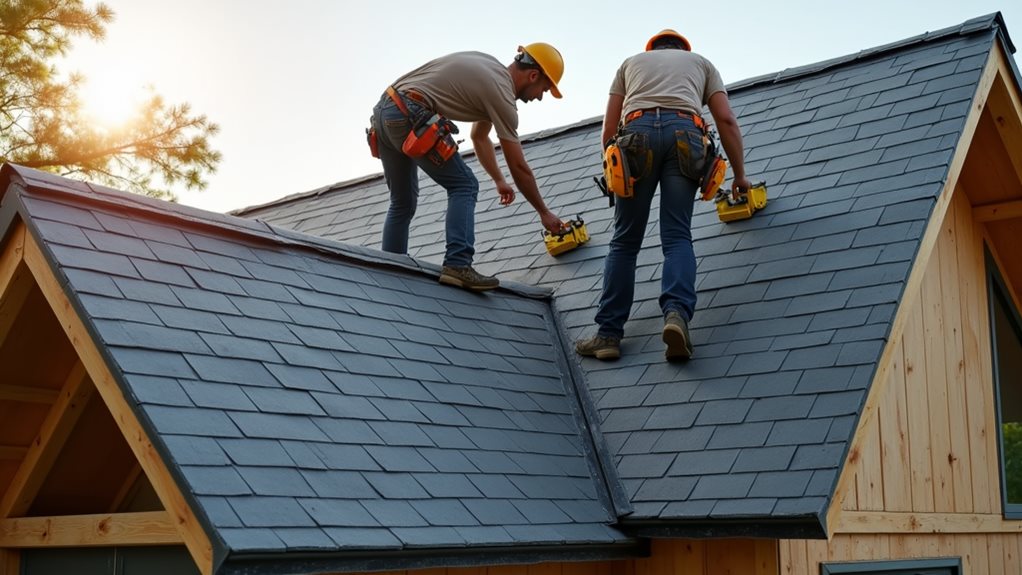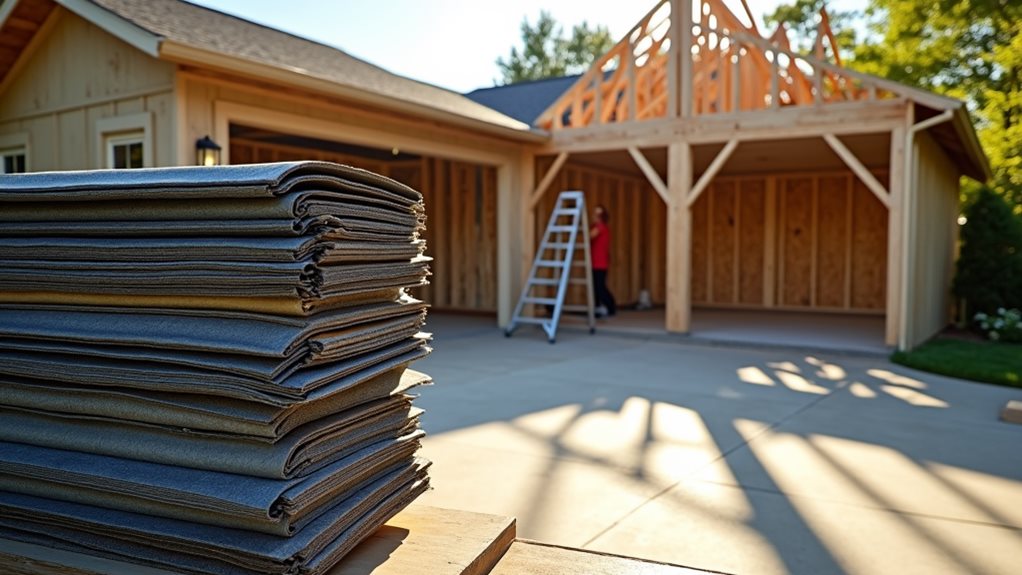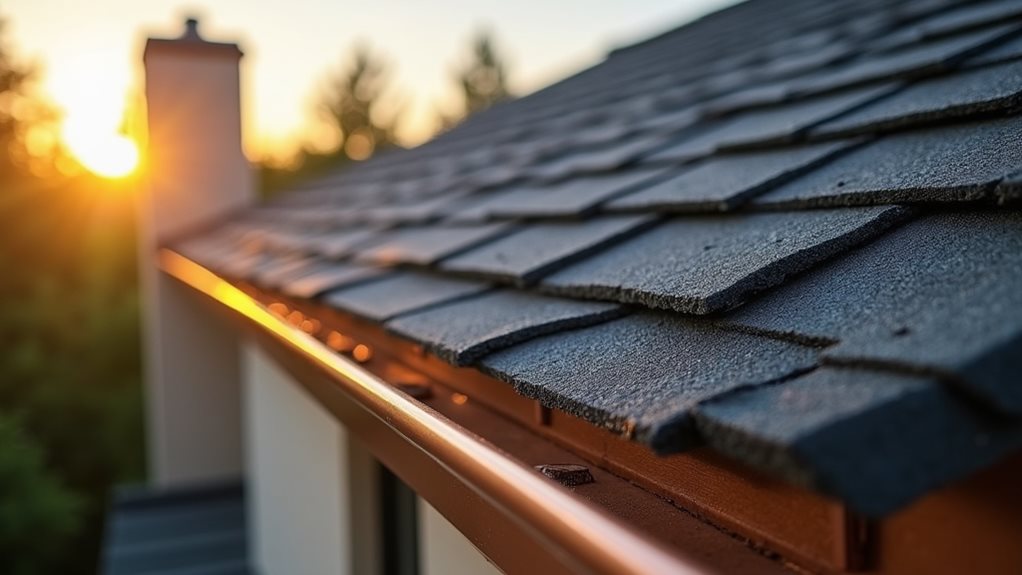Phone:
(701)814-6992
Physical address:
6296 Donnelly Plaza
Ratkeville, Bahamas.

How these 5 critical tips can transform your extension roof project from a costly mistake into a lasting home improvement success.
Success in your extension roof project relies on five key elements: thorough planning with design software, securing proper building permits, selecting appropriate materials for your home's style, implementing effective drainage systems, and establishing a regular maintenance schedule. You'll need to coordinate with local builders, guarantee code compliance, and choose between options like flat EPDM roofs or traditional gabled designs. These fundamentals lay the groundwork for a deeper understanding of your roofing project's essential components.

When you're starting a roof extension project, careful planning of your design won't just enhance your home's aesthetic appeal – it'll also guarantee long-term functionality and structural integrity.
Begin by selecting the roof type that best complements your existing structure, considering factors like pitch, drainage, and local weather patterns. Modern design software can help you visualize different options while ensuring your roof aesthetics align perfectly with your vision.
As you develop your plan, focus on simplifying the design wherever possible. A properly designed roof should include essential components like the ridge and valley to effectively manage water flow. Engaging local builders with expertise in extensions ensures that your project adheres to best practices.
You'll want to maintain consistent slopes and aligned eaves, which not only look better but also reduce potential maintenance issues.
Remember to factor in practical elements like ventilation, material choices, and budget constraints.
Your roof's design should strike the perfect balance between visual appeal and practical performance.
Before diving into your roof extension project, you'll need to navigate the complex landscape of local building requirements. Your first step should be securing the necessary building permits, which typically require detailed plans, proof of ownership, and your contractor agreement.
You'll find that zoning regulations play a significant role in determining what's possible for your project, from height restrictions to approved materials. Structural requirements assessment must be completed to verify your existing home can support the extension.
Don't overlook the importance of compliance with local codes and environmental considerations. If you're in a historical district or have an HOA, you'll need to factor in additional guidelines.
Working with experienced professionals can help you navigate these requirements successfully. Remember to maintain thorough documentation throughout the process, as you'll need it for inspections and future reference.

Selecting the right materials and structure for your roof extension stands as one of the most essential decisions you'll make during your project.
When you're considering roof aesthetics and material sustainability, you'll want to balance both form and function to create a space that seamlessly integrates with your existing home while meeting your practical needs.
Here's what you'll typically encounter when planning your extension:
The material you choose will impact both performance and appearance, so consider factors like durability, weather resistance, and how well it'll complement your home's architectural style.
A properly designed drainage and waterproofing system forms the backbone of any successful roof extension project.
When you're planning your extension, you'll need to take into account modern drainage solutions that match your specific needs, from durable cast iron drains to efficient retrofit options that prevent water damage and leaks.
Your waterproofing techniques should incorporate high-performance materials like EPDM or TPO membranes, which offer exceptional durability and protection.
Don't overlook vital installation steps, such as proper grading and secure flashing at roof sidewalls.
You'll want to make sure your drain pipes are correctly sized and positioned, with compression seals to prevent backflow.

Once you've completed your extension roof project, maintaining its long-term safety and integrity becomes your top priority.
By implementing regular routine inspections and following proper safety protocols, you'll protect your investment while ensuring your family's well-being.
You'll want to establish a maintenance schedule that includes both spring and fall checkups.
Your new extension roof project is like a complex puzzle where every piece must fit perfectly. You'll need to balance design aesthetics, structural integrity, and compliance with local regulations. By following these essential tips, you're well-equipped to navigate the challenges of roof construction while ensuring your investment stands the test of time. Remember, proper planning and attention to detail today will shield your home from tomorrow's uncertainties.